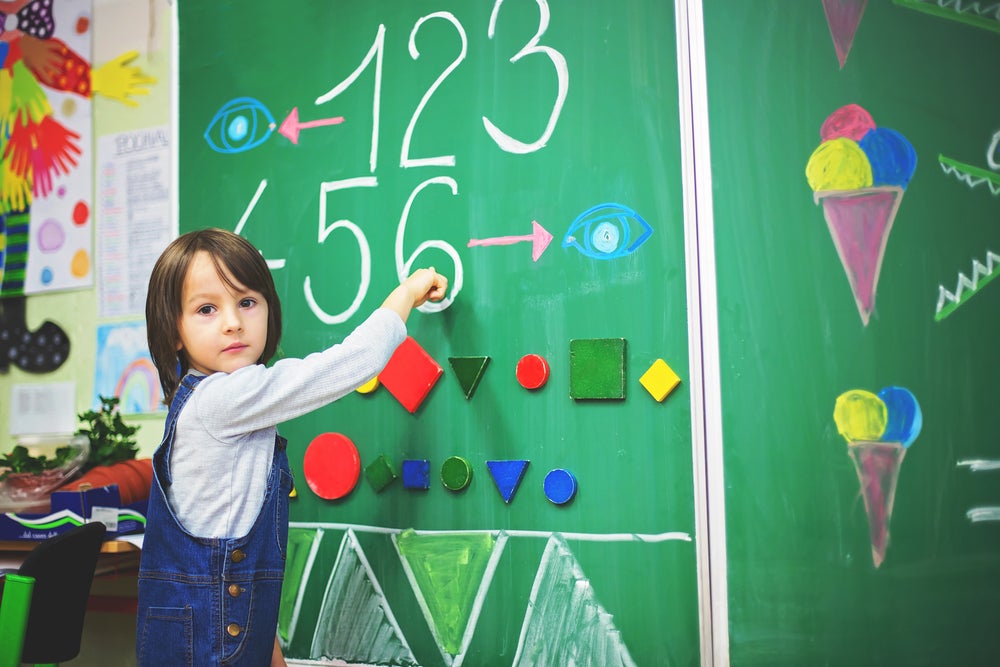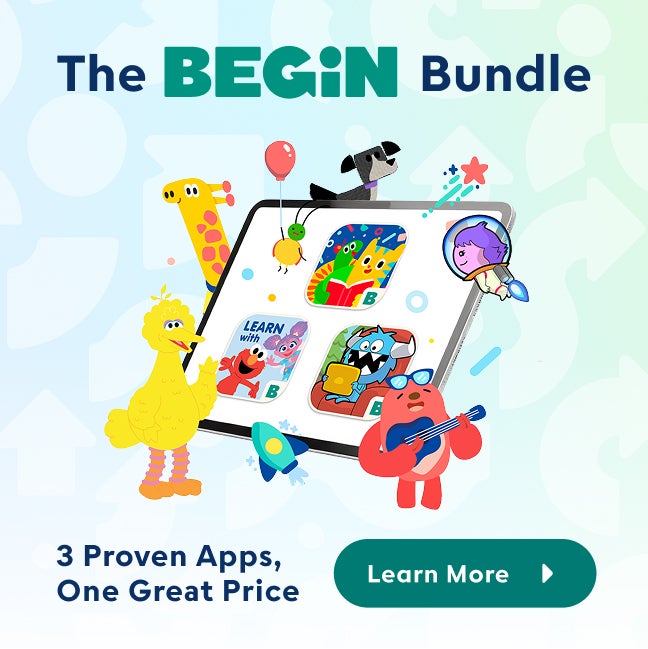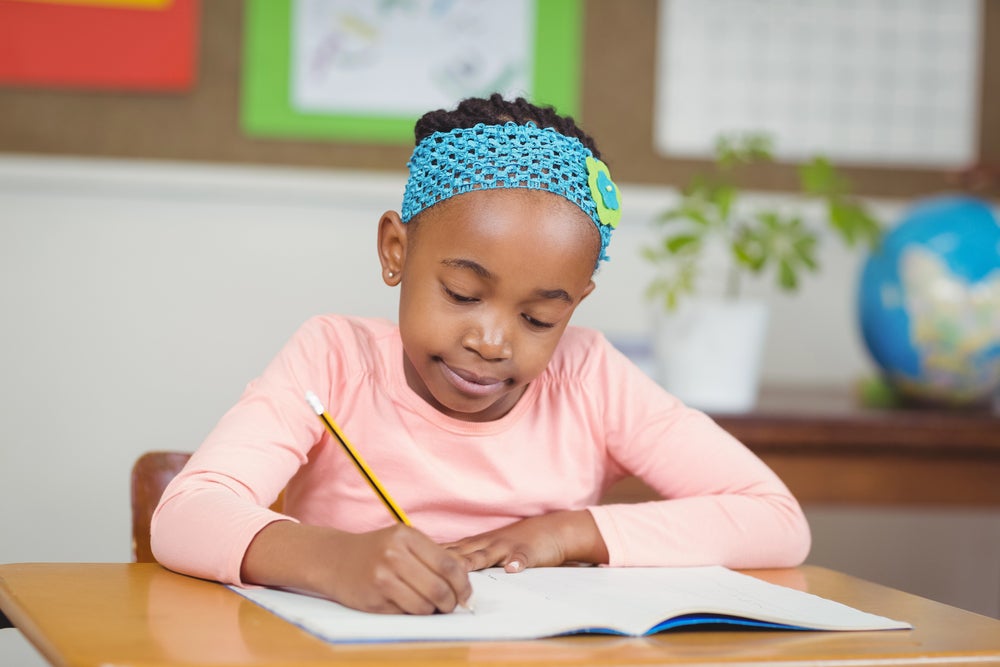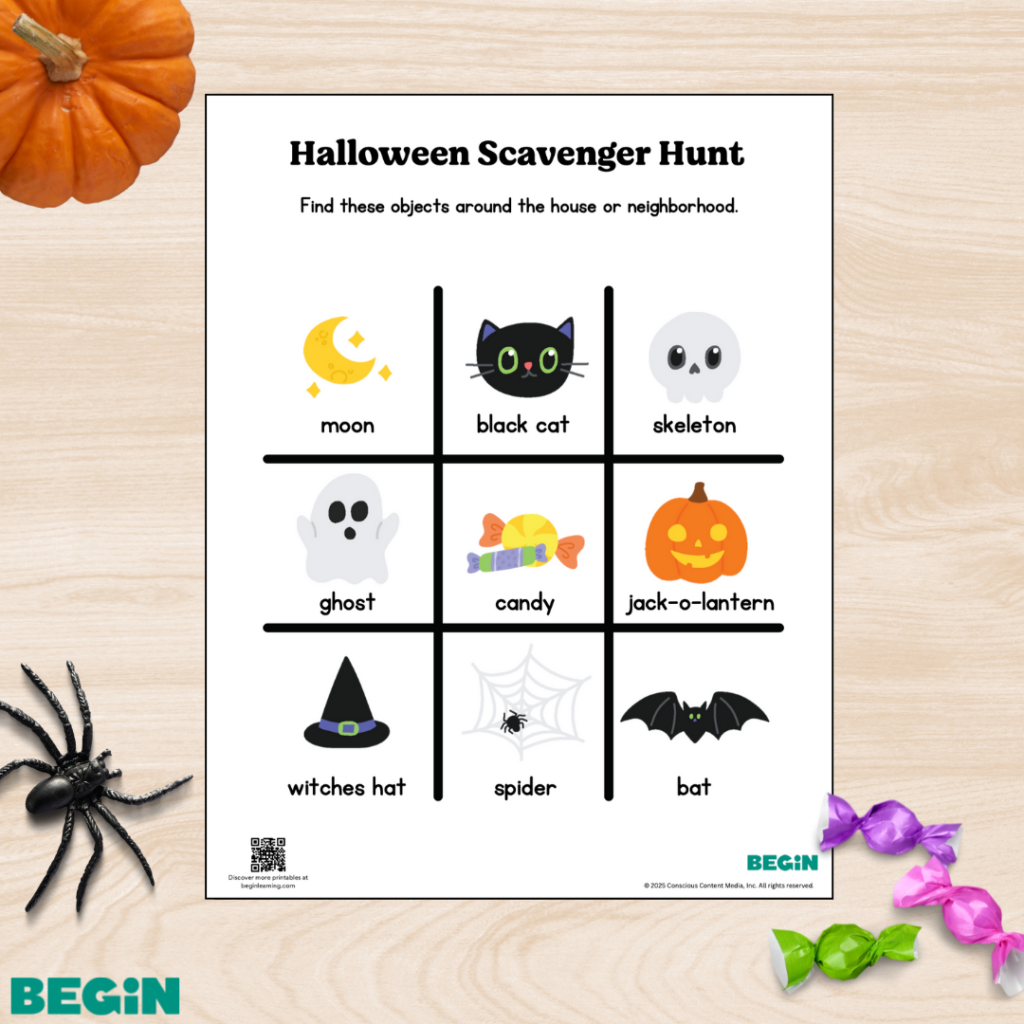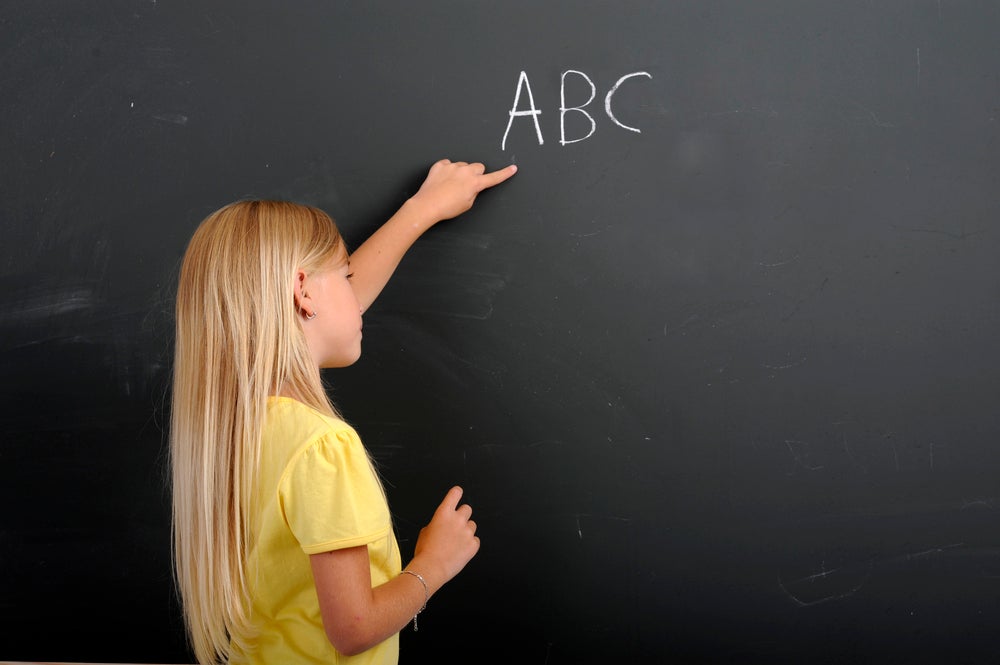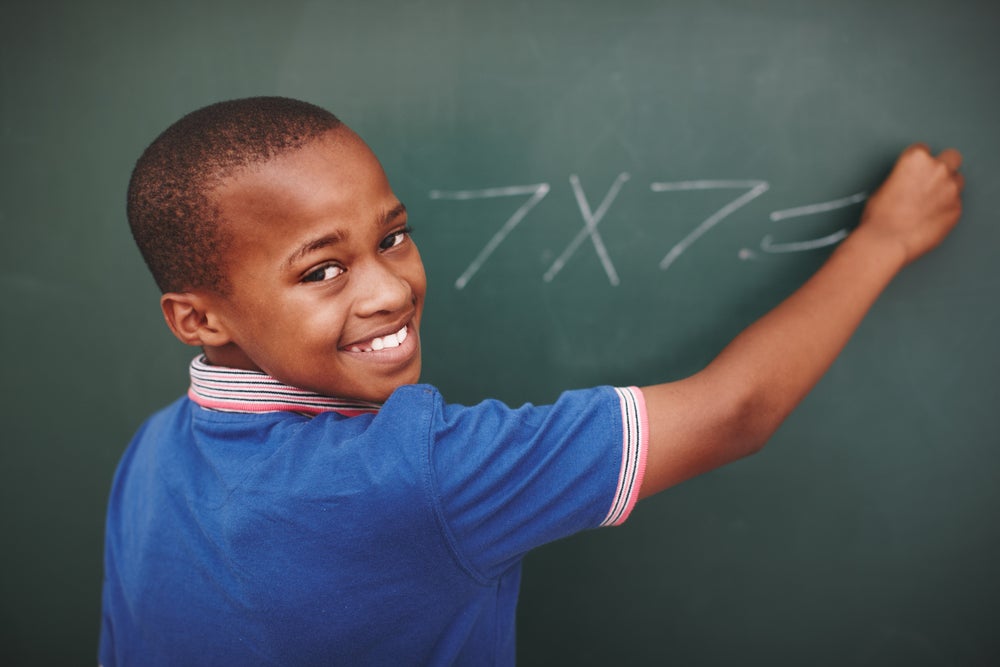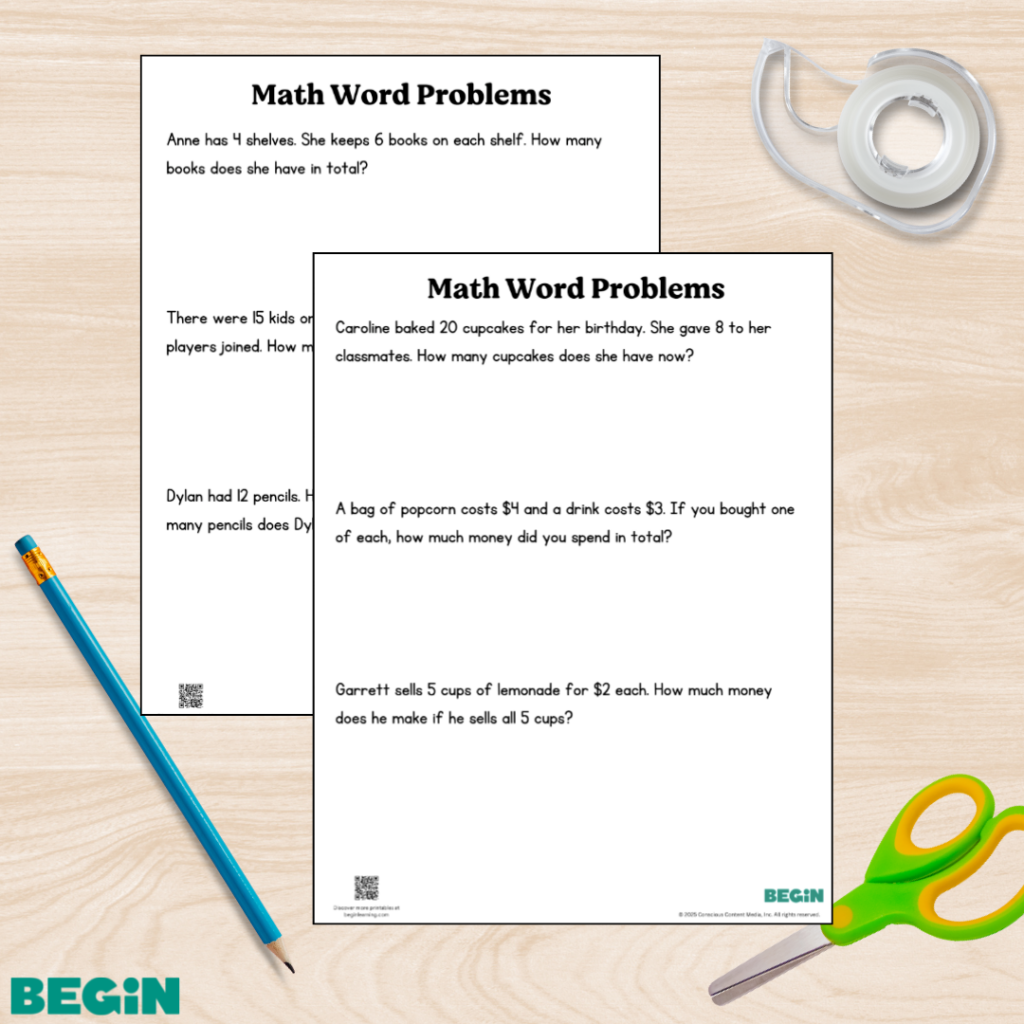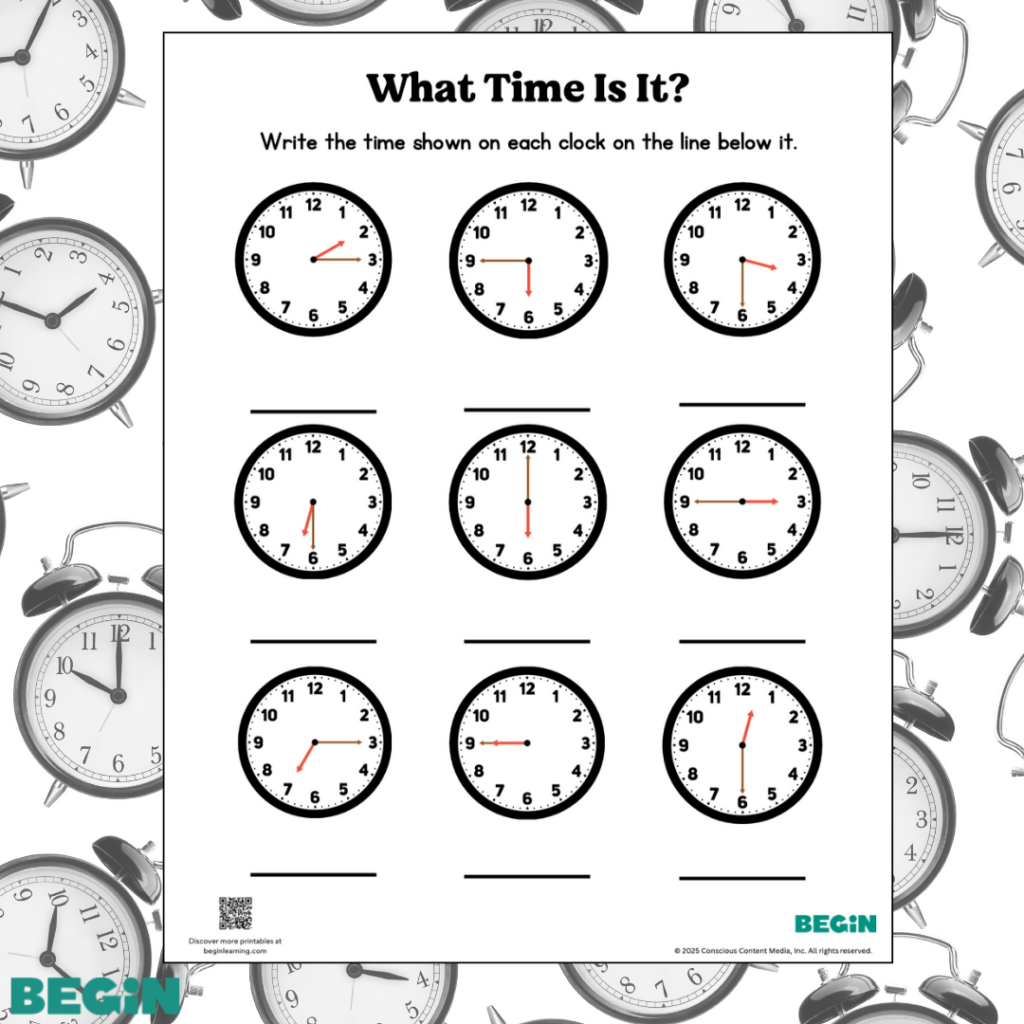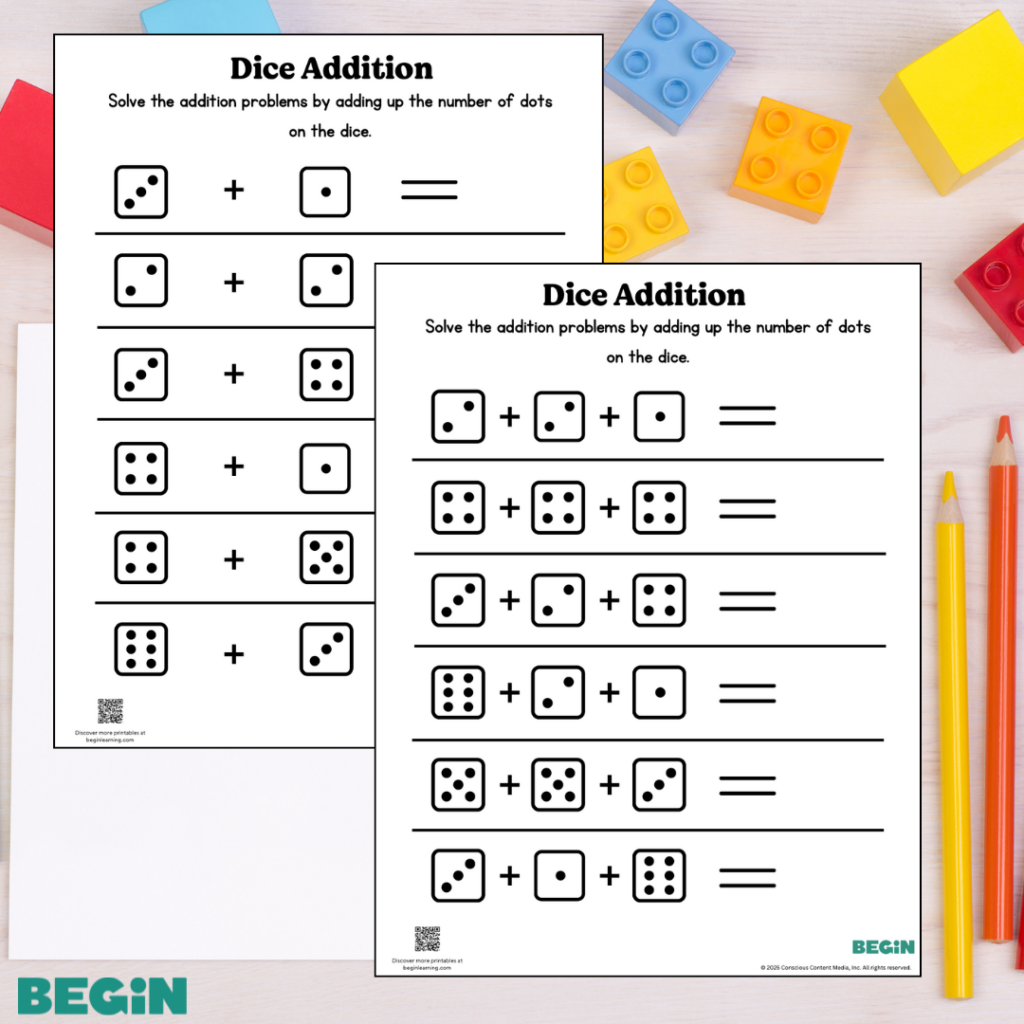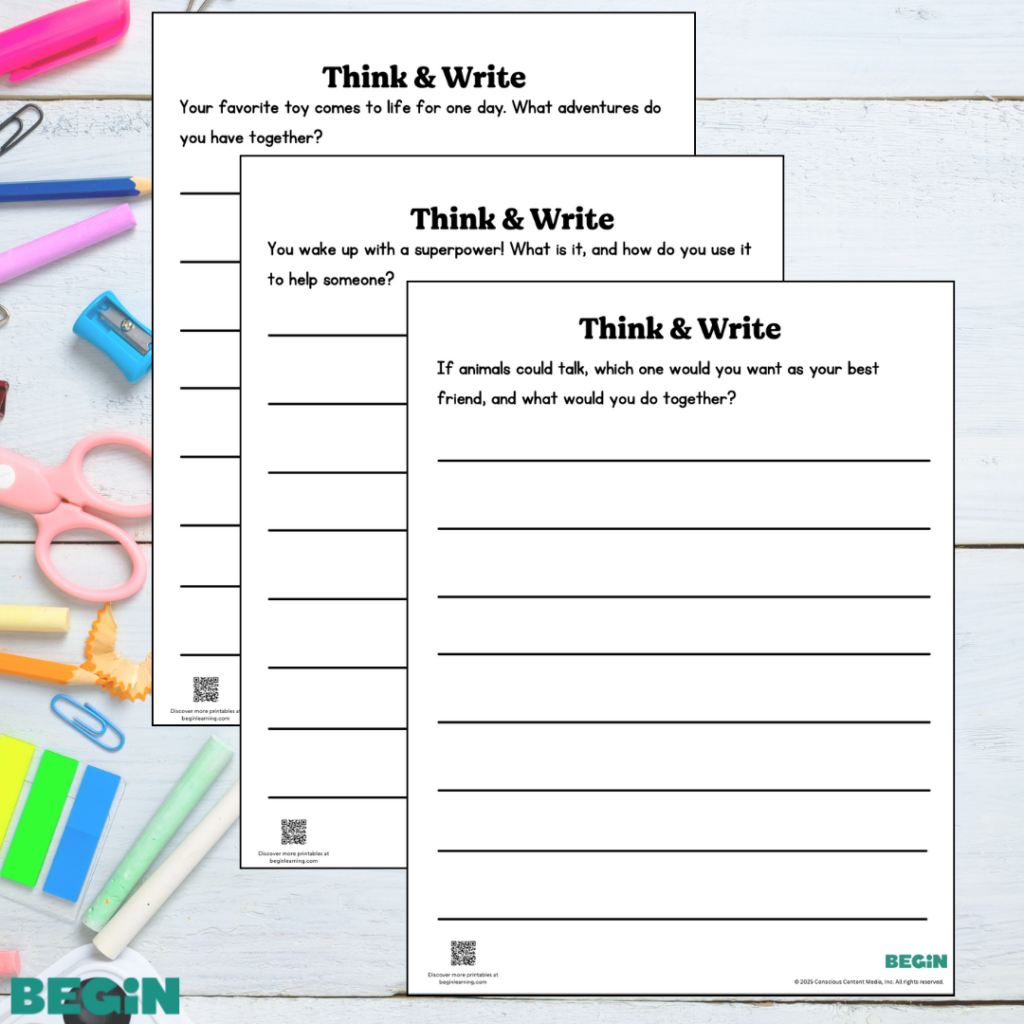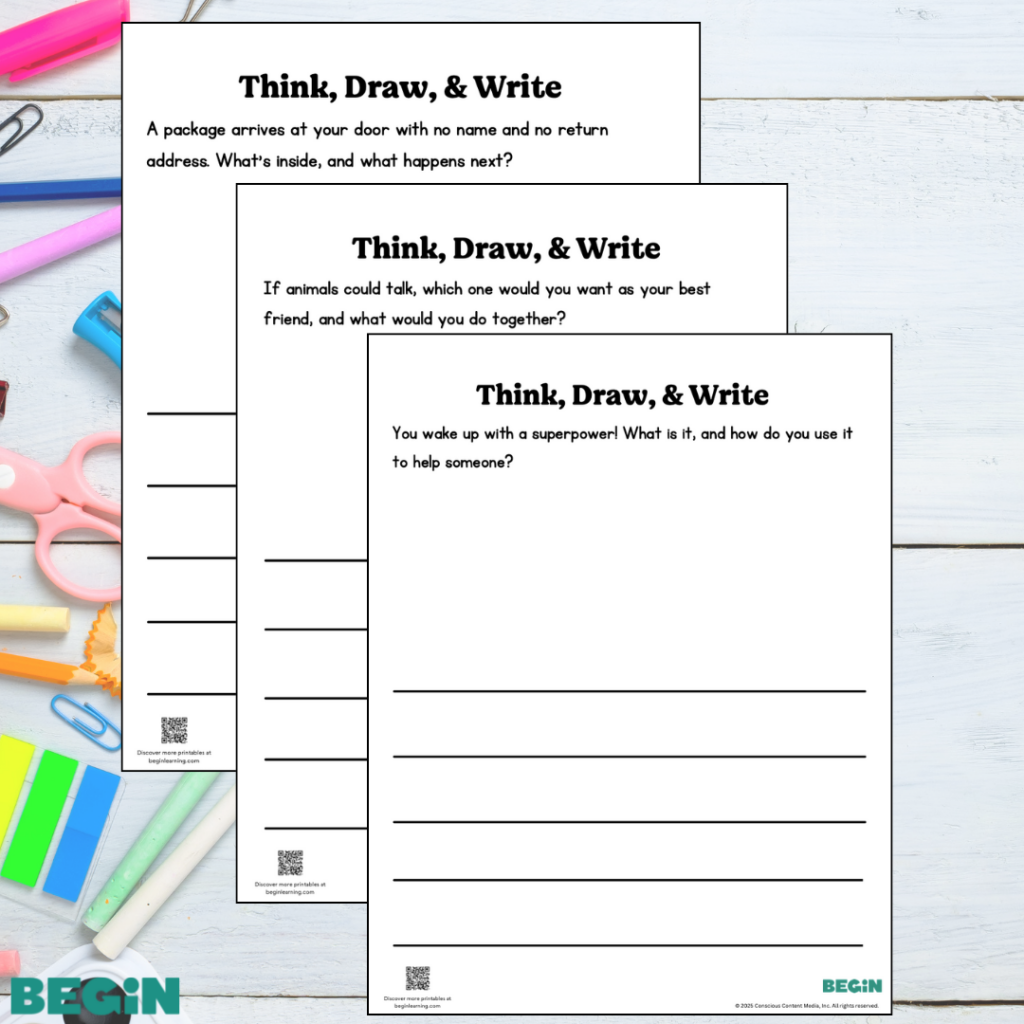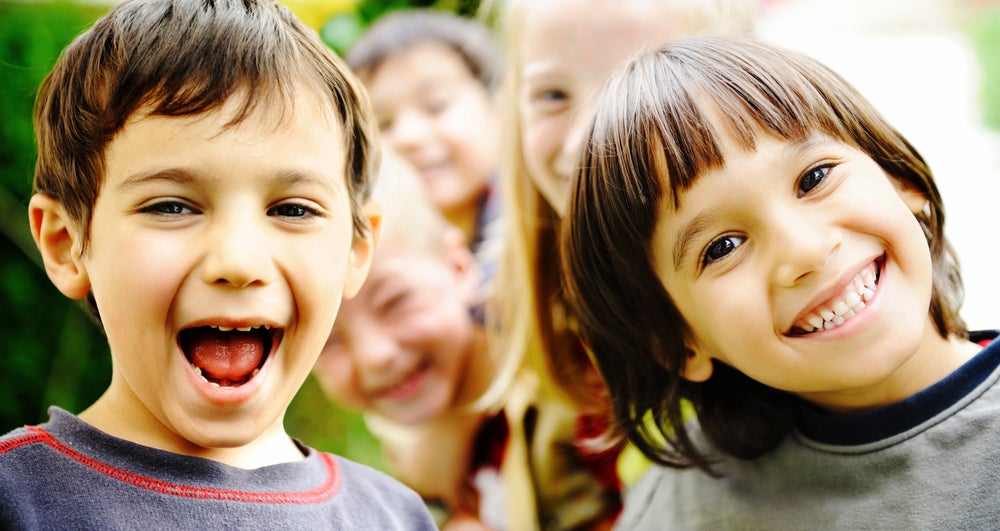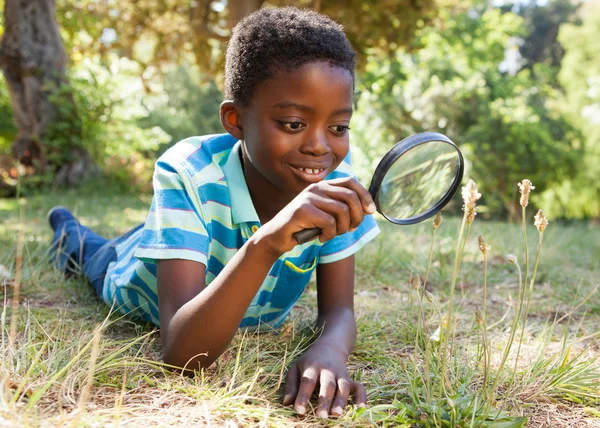For preschoolers, learning the foundations of math is an essential Core Skill — part of the 5 C’s at the heart of the Begin Approach to helping kids thrive in school and life. Kids with well-developed Core Skills do better academically as they get older, setting them up for long-term success.
When it comes to fostering a love for math, number activities for preschoolers are amazing tools to have in your back pocket. In this article, our experts share some easy, fun number activities that you and your preschooler can try at home!
The Short Cut
- Math is an essential Core Skill for preschoolers, part of the 5 C’s that help them thrive in school and life
- Preschoolers start learning how to recognize and write numbers, count, add and subtract, compare numbers (greater than, less than, etc.), recognize and categorize shapes, and what words like plus, minus, and equals mean
- Parents can help by doing math activities with kids, asking math questions in everyday life (“We had four apples. We ate two. How many do we have now?”), and focusing on identifying numbers, counting, and addition
Preschool Math Skills
There are many skills your child will learn in preschool, which are often broken down into five major pillars. Let’s take a look!
Numbers and Counting
Your preschooler will learn how to count using concrete objects. They’ll further their knowledge of numbers by memorizing their names, their word form and written form, and the sequential relationship between numbers.
Along with counting, your child may learn about one-to-one correspondence (you count every object once and give it its own number) and how to compare numbers by value.
Addition and Subtraction
In preschool, your child will be introduced to adding and subtracting numbers. It’s often easier for children to think of these concepts as “putting together” for addition or “taking apart” for subtraction.
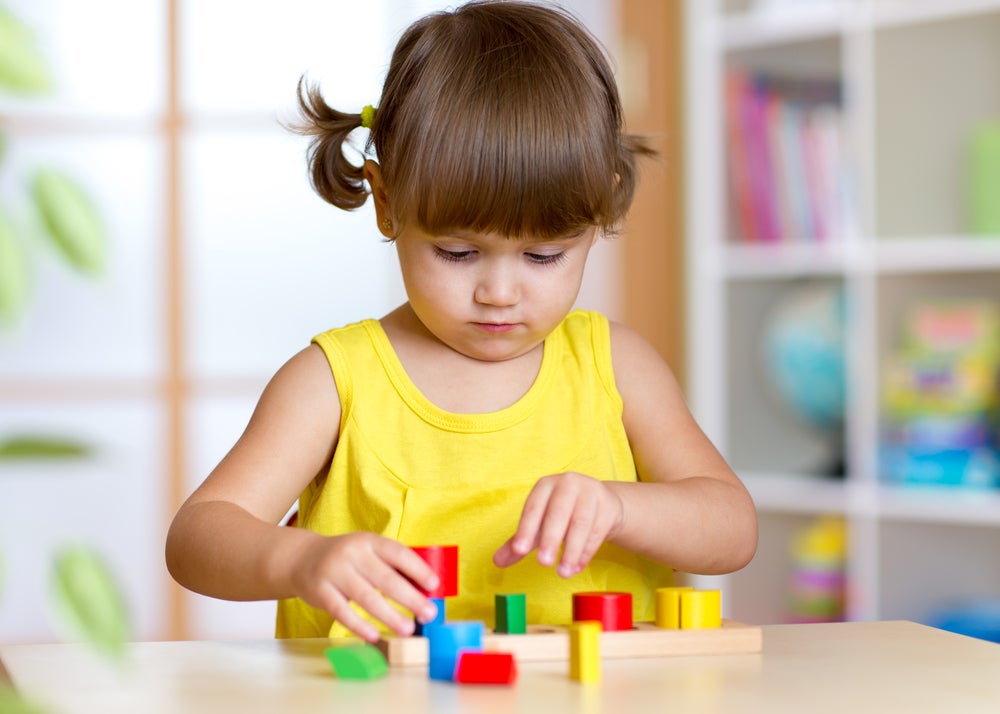
Number Sense
Building on their number and counting skills, your child will learn how to make assessments about numbers.
They’ll learn to use language to compare and contrast different amounts. “More than,” “less than,” “bigger,” “smaller,” “same as” — all of these terms will be used to sort numbers into specific groups.
Geometry and Spatial Reasoning
Your preschooler will learn how to identify shapes and relate them to one another.
They’ll compare shapes in the same way that they compare numbers. They will make evaluations about shapes, their sizes and characteristics, and how they are similar or different from one another.
The Language of Math
Math is its own language, in some ways. When we read 4 + 7 = 11, we may not realize we are translating symbols into words in order to communicate that we want to add four and seven to create eleven.
This can be a difficult concept for children to understand. If you say, “There are twelve donuts in a box. Subtract two donuts. What do you get?” your preschooler will likely have no idea what you mean!
Instead, we introduce preschoolers to math language by framing mathematical concepts in terms they easily understand.
Rather than using words like “minus” or “subtract,” you could say, “There are twelve donuts in a box. I ate two donuts, so now they’re missing. How many donuts are left?”
Over time, your child will understand what they’re meant to do when having these mathematical conversations!
Number Activities for Preschool Learning
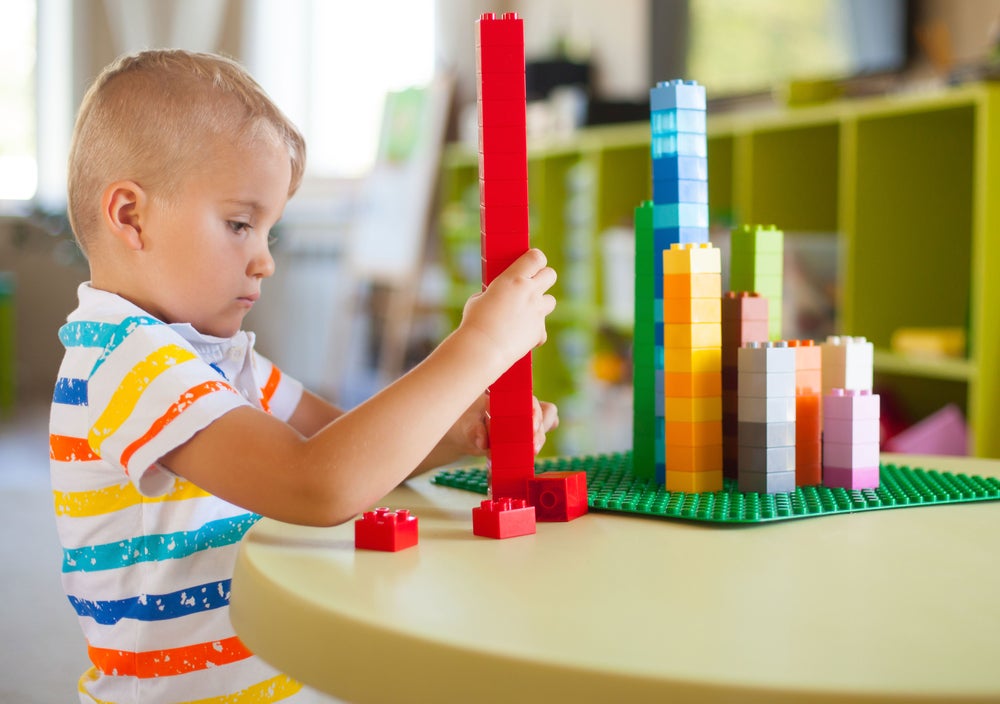
Although all five pillars are integral to your preschooler’s math skills, learning how to count, identify, compare, and combine numbers is especially important at this age. For that reason, most of our activities focus directly on number work.
Here are some of our favorite counting and number activities to help your growing mathematician learn and thrive!
1. Chalk Garden
For this activity, all you’ll need is a set of colorful chalk. On a rainy day, you can adapt this activity for indoor use by swapping chalk for markers and a large sheet of paper (or several small pieces taped together).
On the pavement or piece of paper, write out numbers 1–10 in bold letters. Circle each number. Make sure you leave plenty of space between the numbers, as your child will be drawing around them.
Your child will draw flower petals around each number (using the circled number as the center of the flower). The number of petals they draw will match the respective numeral.
When they’re done, they’ll have a bright, beautiful garden full of number-flowers!
This game works on your preschooler’s fine motor skills, counting skills, and visual math skills. It establishes a direct correlation between numbers and their value, which will further your child’s number knowledge.
2. Monster Maker
For this game, you will need a large sheet of paper, some colorful markers, child-safe glue, a pair of dice, and googly eyes. Your child will be using numbers to help them create their very own monster!
Begin by drawing a large, oval-shaped body as your base. Then your child will roll the dice for the following monster parts:
- Eyes
- Horns
- Teeth or fangs
- Arms
- Legs
- Tails
- Anything else that they want!
You can start with any body part. In our example, we’ll roll our first round for eyes. Your child will roll the dice; let’s say they rolled a three. They would then glue three googly eyes onto their monster’s face.
They will repeat this process for each body part until their monster is complete. To name their monster, you can help them count the total number of added body parts.
So the monster might be named “Experiment #36.” Get creative!
3. Cup Stacking
For this game, you’ll need a piece of paper, a marker, and some stackable cups. If there are no disposable cups around your house, you can also use Legos or another easily stackable object.
To begin, write out a number line with marks for numbers 1–5. Your child will go down the line and stack cups to match the numbers on the line.
Each time they complete a cup stack, they’ll add the stack behind the corresponding number on their number line.
This activity demonstrates how numbers are represented by real objects. When we count on paper or in our head, these numbers can be tied back to tangible objects. This activity also reinforces the idea behind one-to-one correspondence.
It also shows preschoolers how a number is bigger than some numbers but smaller than others, revealing the natural sequential relationship between numbers as we count up and down.
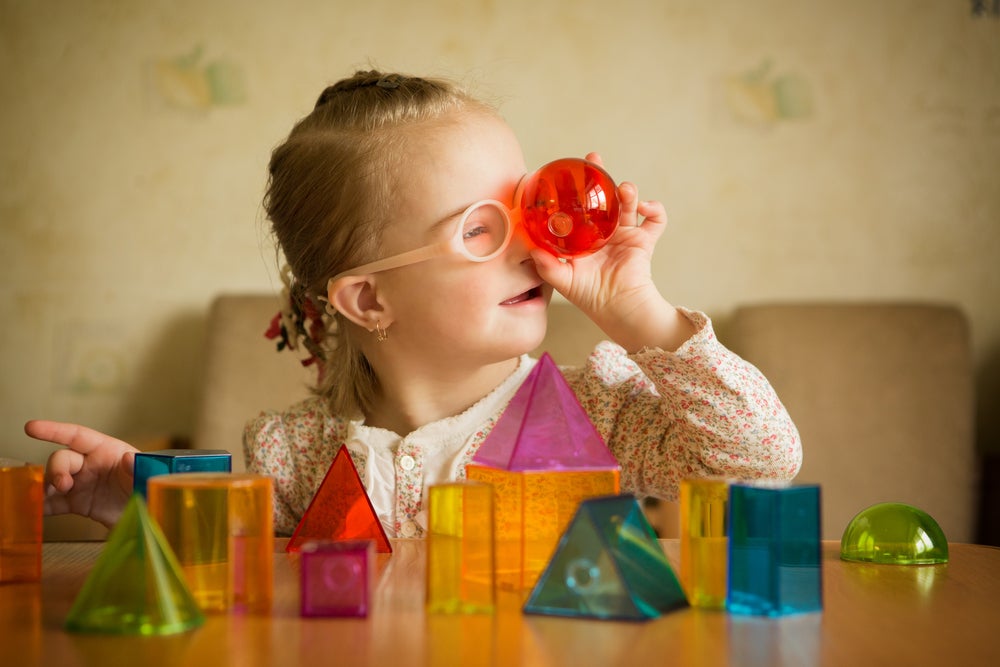
4. Number Parking Garage
If your preschooler is a bit of a motorhead, this is a great game for them! We’ll use a piece of paper, small Post-Its, a marker, and some toy race cars.
Label the cars with individualized “racing” numbers between 1 and 10. Then, on the sheet of paper, draw a basic parking lot with 10 spaces. Label each space with numbers 1 through 10.
To make the activity more difficult as your child gets older or masters the game, consider randomizing the order of the numbers in the parking lot.
Your child will sort through the cars and try to “park” them based on their numbers. This will help with number recognition skills. You can also swap the cars for Legos — instead of labeling the Legos, you’ll stack them to match their racing numbers.
This activity is adaptable, too! Instead of a parking garage and cars, you and your child can host a “movie theater” for stuffed animals.
Simply sit 10 animals along a wall or in chairs with name tags showing their “seat number.” Your child can play usher and hand out numbered tickets to match their seat.
Either way, your preschooler will gain better number recognition with a smile on their face!
5. Painting Numbers
This activity is fun, colorful, and creative, while still working on your child’s number skills!
Pour a few different paint colors into small, disposable cups. Grab a collection of Q-tips and write out numbers 1–10 in large font with a marker or pen.
Your child will use the Q-tips to trace the numbers in colorful paint. They can add decorative designs or keep it simple. Whatever they want! Encourage them to make the numbers their own (without sacrificing legibility, of course).
This activity has the added bonus of working on their writing skills as well as their number recognition abilities.
6. Number Scavenger Hunt
This is a great activity to whip up in a flash when you want to squeeze in some fun, functional number practice.
You will need cards labeled with numbers 1–10 and a sheet of paper with a chart of the same numbers.
For each number slot, there should be stickers that correlate with it. For example, for the number 1 box, there will be 1 sticker; for the number 2 box, 2 stickers, and so on.
Start by hiding note cards with the numbers 1–10 written on them around the house. Keep your chart in a central part of the house; your child will use it similarly to a bingo card, placing their “found” cards in the matching chart boxes (that way they’re practicing their counting skills!).
Play until the entire chart is filled!
Number Activities for Preschool Success
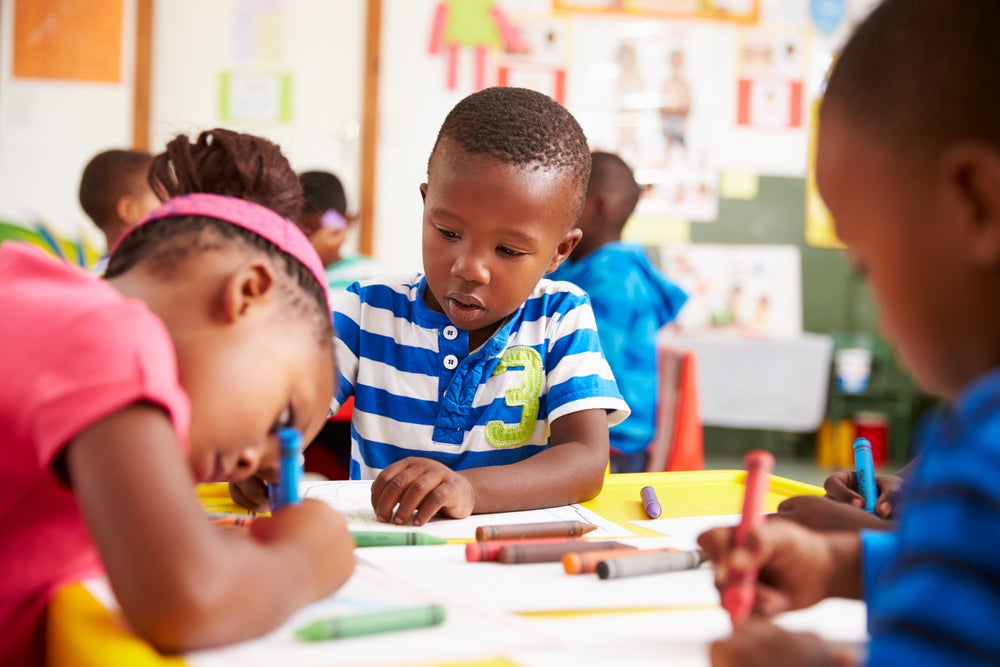
We hope these games gave you some fun and easy ideas for how to work on number activities with your preschooler at home.
We also understand that constructing and playing these games takes time! Some days, there may not be enough time to park numbered toy cars or play the other games listed here.
On those busy nights, you can take advantage of the free trial on our HOMER app for even more number activities.
Kid-safe and ad-free, HOMER helps your child learn the essentials of preschool math while having a blast in the meantime. You can subscribe to it alone or use it as part of our age- and stage-matched learning membership. Give your kids the best start to their learning journey—we’ve got your family covered!
